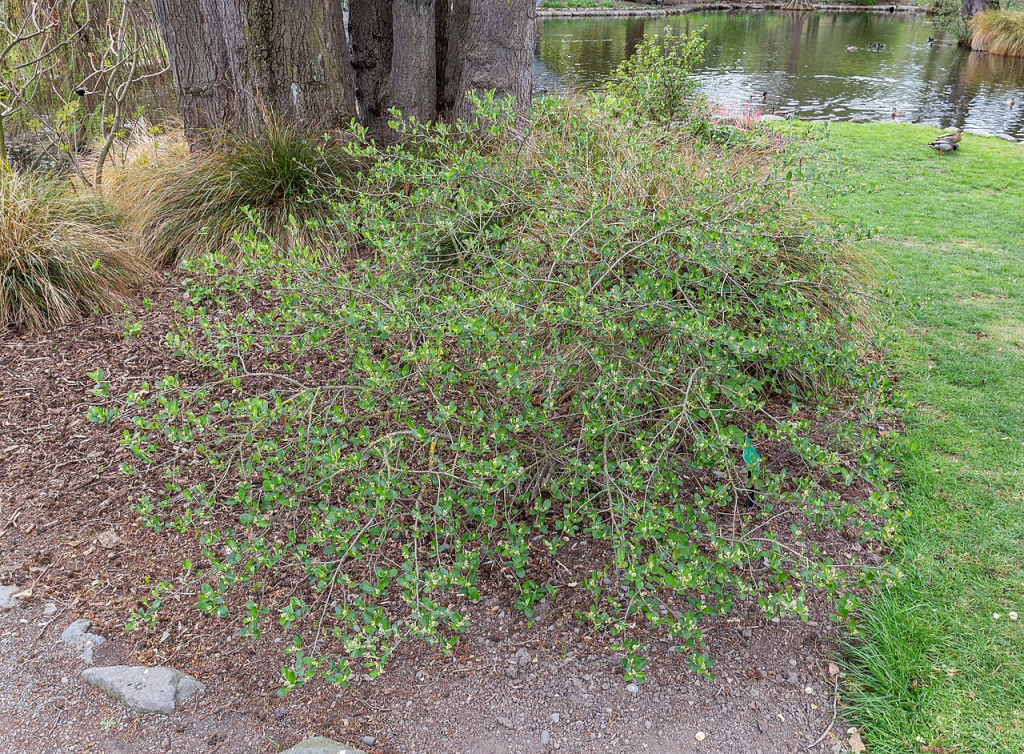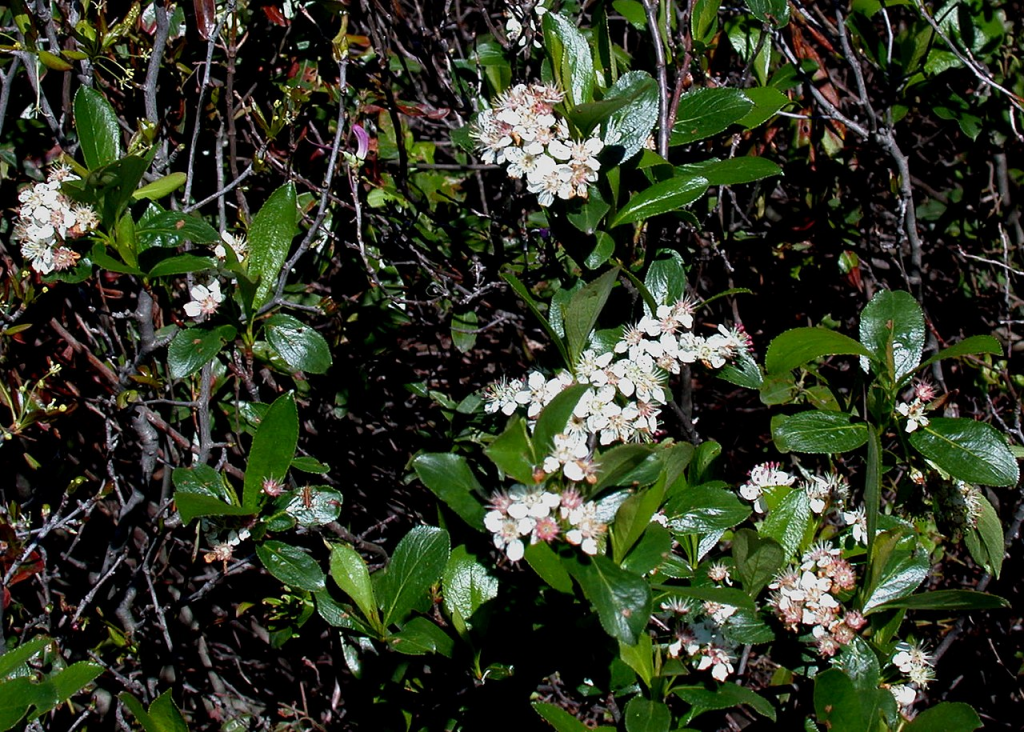
Native to swamps, woodland clearings, wetland forests, and outcroppings in eastern North America from Newfoundland west to Ontario and Minnesota, south to northern Florida, Alabama and Arkansas, this deciduous shrub is a member of the rose family, Rosaceae, that also includes cherry, lady’s mantle, and Photinia. The plant usually grows 4-8′ tall and has an erect, rounded form. The elliptic leaves are 1-3″ long, have finely toothed margins, and are green in summer before turning shades of red in the fall. Clusters of 5-6 tiny white to pink, 5-petaled flowers appear in late spring and are attractive to butterflies and other pollinators. The fruit that follows in late summer to fall is about 1/2″ across, blue-black, and provides food for birds, bears, and small mammals. The fruit is edible but very astringent and is used to make jam, jelly, syrup, tea, juice and wine. Black chokeberry is a good choice for erosion control, or in a shrub border as well as in woodland, butterfly, pollinator, wildlife, bird, edible, rain and native plant gardens. The genus name, Aronia, comes from the Greek word aria, a species of Sorbus, and refers to the resemblance of its fruit to chokecherry fruit. The specific epithet, melanocarpa, comes from Greek words μέλας (mélas) meaning black, and Καρπός (karpos) meaning fruit . Photo Credit: Michal Klajban, Wikimedia Commons

Type: Deciduous shrub
Outstanding Feature: Berries, fall coloration
Form: Upright, rounded
Growth Rate: Moderate to slow
Bloom: Clusters of 5-6 tiny white to pink, flowers in late spring
Size: 3-10′ H x 2-6′ W
Light: Full sun to partial shade but best flowering and berry production in full sun
Soil: Average, dry to wet, poorly-drained to well-drained, acidic; tolerates wide range of soil conditions

Hardiness: Zones 3-8
Care: Prune soon after flowering; remove unwanted suckers
Pests and Diseases: None of significance
Propagation: Seed (with cold stratification), cuttings
Outstanding Selections:
‘Autumn Magic’ (bright fall coloration)
‘Elata’ (compact)
‘McKenzie’ (6-12′ tall)
‘Morton’ (dwarf, 3′ tall)
‘Viking’ (large fruit; 4-6′ tall, red fall colorization)